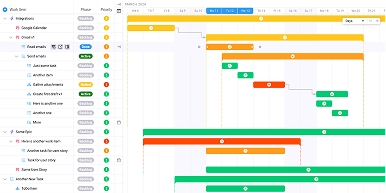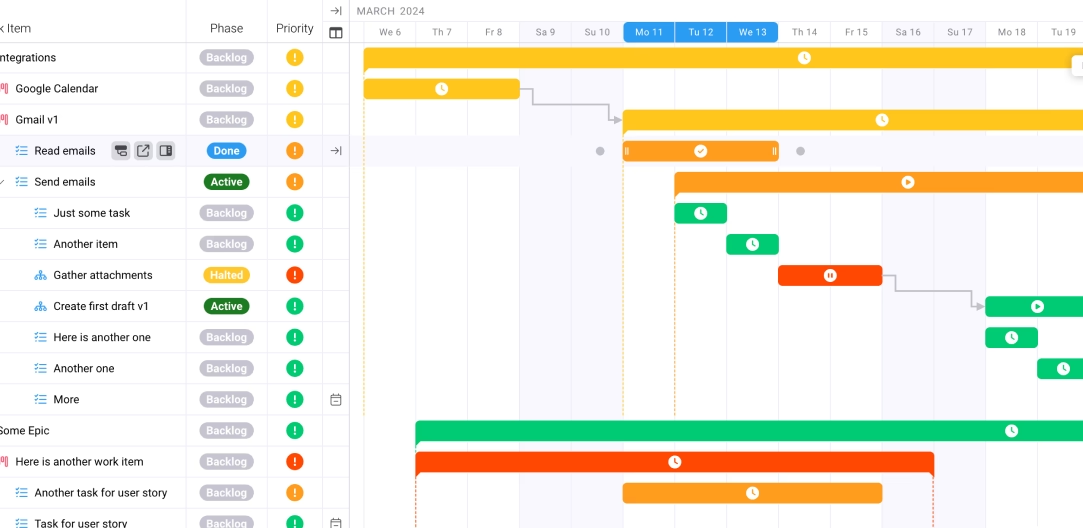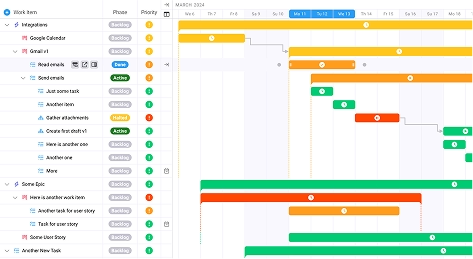
How to Price Managed IT Services: A Complete Guide for 2025
Key takeaways:
Here’s a counterintuitive truth that most managed service providers (MSPs) discover too late: 40% of MSPs use a combination of pricing models rather than sticking to a single approach, yet many still struggle with profitability because they’re pricing based on competitor benchmarks instead of their own value delivery. While the industry standard for managed IT services pricing hovers between $150-200 per user monthly, the most successful MSPs in 2025 are breaking away from cookie-cutter formulas and building pricing strategies that reflect their unique service portfolios, client relationships, and market positioning.
The Current Pricing Landscape: What’s Broken in Traditional MSP Pricing
The managed services industry is experiencing unprecedented growth, with the global managed services market expected to reach $572.15 billion by 2033, representing a CAGR of 8.30% from 2025 to 2033. Yet despite this explosive growth, many MSPs are trapped in a race-to-the-bottom pricing mentality that’s destroying their profit margins and limiting their ability to deliver exceptional service.
The fundamental problem lies in how most MSPs approach pricing. Traditional models focus heavily on per-device pricing structures (used by 32% of MSPs) or per-user models (20% of MSPs), but these approaches often fail to account for the true value delivered to clients. Small businesses with up to 20 employees typically spend $2,000 to $3,000 monthly on fully managed IT services, while medium businesses with 50 employees invest $5,000 to $7,000 per month.
The challenge intensifies when MSPs try to maintain healthy gross profit margins of 60-70% while remaining competitive in an increasingly crowded marketplace. Many providers find themselves caught between client demands for lower costs and the rising complexity of modern IT infrastructure, particularly as businesses require more sophisticated cybersecurity, cloud management, and AI-driven solutions.
The Strategic Framework: Value-Based Pricing for Sustainable Growth
Successful MSPs in 2025 are shifting from cost-plus pricing models to value-based approaches that align pricing with business outcomes. This framework centers on three core principles: understanding your true service costs, quantifying client value delivery, and building pricing flexibility into your service offerings.
Cost Foundation Analysis
Before establishing any pricing structure, MSPs must understand their complete cost structure. This includes direct costs like labor, software licenses, and hardware, plus indirect expenses such as marketing, administration, and ongoing training. MSPs typically aim for profit margins between 25-35%, depending on overhead complexity and market competition.
The key is calculating your break-even point for each service tier and building sufficient margin to reinvest in innovation and maintain healthy cash flow. Many MSPs underestimate the hidden costs of service delivery, including after-hours support, system monitoring, and the administrative overhead of managing multiple client environments.
Value Quantification Process
Value-based pricing requires MSPs to clearly articulate and measure the business impact of their services. This means going beyond technical metrics to demonstrate how your services reduce client downtime, improve productivity, enhance security posture, and enable business growth. For example, if your monitoring services prevent a 4-hour outage that would cost a client $10,000 in lost productivity, that prevention represents quantifiable value.
Successful project management methodologies become crucial here, as they help MSPs track and document the measurable business outcomes they deliver. This documentation becomes the foundation for pricing justification and client retention.
Pricing Flexibility Architecture
Modern MSPs need pricing structures that can adapt to different client needs, industry requirements, and service complexity levels. This doesn’t mean offering unlimited customization, but rather building modular pricing that can scale appropriately. The most successful providers offer 2-3 clearly defined service tiers with optional add-ons, allowing clients to select the level of service that matches their needs and budget.
Implementation Tactics: Five Pricing Strategies That Drive Profitability
1. Tiered Service Portfolios with Clear Value Differentiation
Instead of offering a single “managed services” package, structure your offerings into distinct tiers that address different client sophistication levels and budgets. A typical structure might include:
- Essential Tier: Basic monitoring, help desk, and patch management for cost-conscious clients
- Professional Tier: Comprehensive IT management including proactive monitoring, security services, and strategic planning
- Enterprise Tier: Full IT partnership with advanced analytics, compliance support, and dedicated account management
Each tier should have clear value propositions and pricing that reflects the scope of services provided. This approach allows you to serve different market segments while maintaining healthy margins across your client base.
2. Hybrid Pricing Models for Maximum Flexibility
Given that 40% of successful MSPs use combination pricing models, consider blending different approaches based on service type and client needs. For example:
- Core infrastructure services priced per user or device
- Project work and implementations charged hourly or fixed-fee
- Strategic consulting and compliance services priced as retainers
- Specialized services like cybersecurity or cloud migration offered as add-ons
This hybrid approach allows you to optimize pricing for different service types while maintaining predictable revenue streams through recurring monthly fees.
3. Industry-Specific Pricing Adjustments
Different industries have varying IT complexity, compliance requirements, and risk tolerance levels. Healthcare organizations require HIPAA compliance and enhanced security measures, while financial services need robust data protection and regulatory reporting. Manufacturing companies often need specialized operational technology support.
Adjust your pricing to reflect these industry-specific requirements and the additional expertise required to serve them effectively. This specialization allows you to command premium pricing while delivering exceptional value to clients in your target verticals.
4. Transparent Pricing with Defined Scope Boundaries
One of the biggest challenges in managed IT services pricing is scope creep. Establish clear boundaries for what’s included in your base pricing and what constitutes additional services. This transparency builds trust with clients and protects your margins.
Implement robust project management processes to track service delivery and identify when work falls outside the agreed scope. This documentation supports both pricing justification and future contract negotiations.
5. Annual Pricing Reviews and Adjustment Mechanisms
Technology costs, labor rates, and service complexity all change over time. Build annual pricing review processes into your client contracts, allowing for reasonable adjustments based on cost inflation, service enhancements, or changing client requirements.
Many MSPs fail to raise prices appropriately, eroding their margins over time. Successful providers build pricing escalation clauses into their contracts and communicate value increases clearly to clients.
Measuring Success: KPIs and Metrics That Matter
Effective pricing strategies require ongoing measurement and optimization. Key performance indicators for MSP pricing success include:
Financial Health Metrics
- Gross profit margins by service tier and client
- Average revenue per user (ARPU) and its trends over time
- Client lifetime value (CLV) and acquisition cost ratios
- Monthly recurring revenue (MRR) growth and churn rates
Target gross profit margins of 60-70% while monitoring how different pricing strategies affect these metrics. Track which service tiers and client segments generate the highest profitability.
Client Satisfaction and Retention
- Net Promoter Score (NPS) and client satisfaction surveys
- Contract renewal rates and expansion revenue
- Support ticket volume and resolution times
- Client complaints specifically related to pricing or value perception
These metrics help you understand whether your pricing strategy aligns with client value perception and satisfaction levels.
Operational Efficiency Indicators
- Service delivery cost per client and per user
- Technician utilization rates and billable hour percentages
- Automated vs. manual task ratios
- Time-to-resolution for common issues
Improved operational efficiency allows you to maintain margins while delivering better service quality. Resource planning tools help track these metrics effectively.
Competitive Positioning Metrics
- Win/loss rates for new business proposals
- Competitive displacement frequency
- Market share growth in target segments
- Pricing position relative to competitors
Understanding your competitive position helps validate your pricing strategy and identify opportunities for differentiation.
Future Considerations: Emerging Trends Shaping MSP Pricing
The managed services industry continues evolving rapidly, with several trends that will significantly impact pricing strategies through 2025 and beyond.
AI-Driven Service Delivery
Artificial intelligence is transforming how MSPs deliver services, from automated monitoring and incident response to predictive maintenance and capacity planning. AI-driven technologies are enabling MSPs to deliver higher-quality services with greater efficiency, but they also require significant investment in new tools and training.
MSPs that successfully integrate AI into their service delivery can justify premium pricing while reducing operational costs. However, the technology also commoditizes some traditional IT services, requiring providers to focus on higher-value strategic consulting and business advisory services.
Cybersecurity as a Core Service
With cyber threats escalating in frequency and sophistication, cybersecurity is transitioning from an optional add-on to a core component of managed IT services. This shift affects pricing in two ways: it increases the baseline cost of service delivery, and it creates opportunities for premium security-focused service tiers.
MSPs that develop deep cybersecurity expertise can command significantly higher prices, but they also face increased liability and compliance requirements that affect their cost structure.
Cloud-First Service Models
As businesses accelerate cloud adoption, MSPs are shifting from traditional on-premises infrastructure management to cloud-centric services. This transition affects pricing models significantly, as cloud services often have variable costs that don’t align with traditional fixed monthly pricing.
Successful MSPs are developing new pricing approaches that account for cloud resource consumption while maintaining predictable revenue streams. This might include base management fees plus variable charges for cloud resource usage.
Industry Specialization and Vertical Focus
Generic “one-size-fits-all” managed services are becoming less viable as businesses demand industry-specific expertise. MSPs that develop deep knowledge in specific verticals like healthcare, financial services, or manufacturing can command premium pricing for their specialized services.
This specialization trend affects pricing by creating opportunities for higher margins while requiring additional investment in industry-specific training, certifications, and compliance capabilities.
Subscription Economy Integration
The broader shift toward subscription-based business models is influencing how clients think about IT services. Businesses increasingly expect flexible, scalable pricing that can adapt to their changing needs rather than fixed contracts with long-term commitments.
MSPs need to develop more flexible pricing models that can scale up or down based on client usage while maintaining revenue predictability. This might include consumption-based pricing elements or more granular service modules that clients can add or remove as needed.
Conclusion: Building Sustainable Pricing for Long-Term Success
The managed IT services pricing landscape in 2025 demands a sophisticated approach that balances profitability, client value, and competitive positioning. Success requires moving beyond traditional cost-plus or competitor-based pricing toward value-driven models that reflect the true business impact of your services.
The most successful MSPs will be those that can clearly articulate their value proposition, maintain healthy profit margins while remaining competitive, and adapt their pricing strategies to evolving client needs and market conditions. This requires ongoing investment in operational efficiency, service delivery capabilities, and client relationship management.
Remember that managed IT services pricing is not just about setting monthly fees—it’s about building sustainable business relationships that benefit both your company and your clients. By focusing on value delivery, maintaining transparent pricing practices, and continuously optimizing your service offerings, you can build a pricing strategy that supports long-term growth and profitability in the dynamic managed services market.
Whether you’re just entering the MSP space or looking to optimize your existing pricing strategy, the key is to start with a clear understanding of your costs, value delivery, and client needs. From there, you can build a pricing framework that positions your business for sustainable success in 2025 and beyond.








